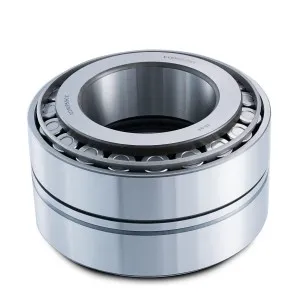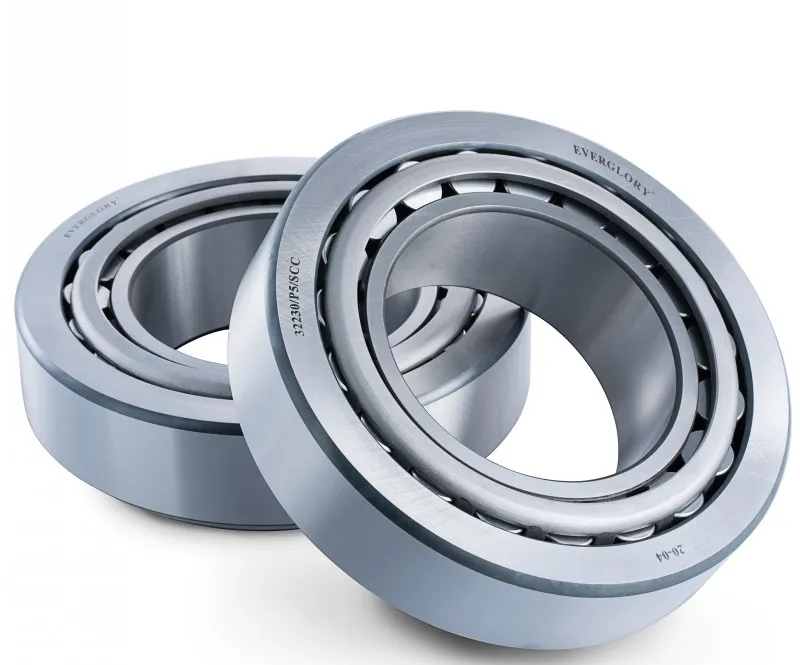1. What is taper roller bearing?
A taper roller bearing is a type of rolling-element bearing that uses conical rollers that are tapered so that they get progressively wider towards the base of the cone. The point where the cones meet is called the “cup,” and the point where the cones and rollers intersect is called the “cone.” Tapered roller bearings are typically used in applications where high radial loads and axial loads (thrust loads) are present, such as in automotive axle systems.

2. Why we use taper roller bearing?
There are several reasons why taper roller bearings are used in a wide range of applications.
Firstly, they are able to support both radial and axial loads, making them suitable for use in a variety of different settings.
Secondly, taper roller bearings have a high degree of stiffness, meaning that they can maintain accurate alignment even under heavy loads.
Finally, taper roller bearings are very durable and require little maintenance, making them ideal for use in demanding environments.
3. Why are tapered roller bearings used in pairs?
Tapered roller bearings are used in pairs because they are designed to manage both thrust and radial loads.
The tapered shape of the rollers allows them to distribute force evenly while rotating, which helps to reduce wear on the bearing over time.
Additionally, using two bearings in a pair helps to cancel out any potential misalignment that could occur during operation.
4. How are tapered roller bearings made?
Tapered roller bearings are made by combining two essential components: the cone (inner ring) and the cup (outer ring).
The cone consists of a tapered inner surface that supports the rolling elements (the rollers). The cup has a tapered outer surface that is used to locate the bearing in the housing.
Tapered roller bearings are typically used in applications where there is a need for high load capacity and good shock resistance.
5. How taper roller bearing works?
Taper roller bearings work by using conical rollers that fit in tapered races.
The rollers are usually made of hardened steel and taper down from the outer diameter of the bearing to the inner diameter. As the rollers rotate, they help to keep the shaft in place while reducing friction between the shaft and the housing.
A taper roller bearing is a type of rolling-element bearing that consists of a set of tapered rollers arranged in a conical pattern.
The rollers are typically made from hardened steel and are used to support heavy loads. The bearings are commonly used in automotive and industrial applications.
6. Taper roller bearing benefits?
Taper roller bearings offer a number of advantages over other types of bearings, including:
-Higher load capacity: The tapered shape of the rollers allows them to distribute weight better and handle higher loads than cylindrical or spherical bearings.
-Increased durability: The tapered shape also helps to reduce wear on the bearing surfaces, resulting in a longer lifespan.
-Improved accuracy: Taper roller bearings are more precise than other types of bearings, which can improve the performance of machinery.
-Reduced maintenance: Taper roller bearings require less frequent maintenance than other types of bearings, making them more cost-effective in the long run.
7.How to install tapered roller bearings?
To install tapered roller bearings, first, clean the bearing surfaces with a solvent. Next, apply a light coat of grease to the bearing surfaces. Finally, press the bearings into place using a press or hammer.
There are a few things to keep in mind when installing tapered roller bearings:
- Make sure the bearing is properly seated in the housing.
- Make sure the races are properly aligned.
- Make sure the seals are properly installed.
- Make sure the retaining ring is properly installed.
- Make sure the spacer is properly installed.
- Make sure the nut is torqued to the proper specification.
8. Tapered roller bearings are used?
Tapered roller bearings are used in various applications, including automotive, mining, construction, construction equipment, and industrial machinery.
And more. They are designed to accommodate both radial and axial loads and can be found in a wide range of sizes.
Tapered roller bearings are typically made from high-quality materials, such as steel or ceramic, and can offer a long service life.
The design of the tapered rollers allows them to distribute the load evenly while reducing friction.
9.Difference between spherical roller bearing and taper roller bearing?
There are several key differences between spherical roller bearings and taper roller bearings.
Spherical roller bearings have a barrel-shaped rollers that run inside a spherical inner ring, while taper roller bearings have tapered cylindrical rollers that run inside a conical inner ring.
Additionally, spherical roller bearings can accommodate higher misalignment than taper roller bearings.
Taper roller bearings are typically more suited for high speed applications than spherical roller bearings.
Taper roller bearings are generally used for radial loads while spherical roller bearings can support both radial and axial loads.
Taper roller bearings typically have a higher load capacity than spherical roller bearings.
Finally, taper roller bearings typically have a shorter life span than spherical roller bearings.
10.When to replace tapered roller bearings?
Tapered roller bearings are designed to last for many years. However, like any other type of bearing, they will eventually need to be replaced.
A few signs indicate when it is time to replace tapered roller bearings. These include noise from the bearings, difficulty rolling the wheels, and excessive vibration.
If any of these problems are noticed, it is best to have the bearings replaced as soon as possible to avoid further damage.
Also, there are several factors to consider when deciding when to replace tapered roller bearings.
The first is the condition of the bearings themselves. If they show signs of wear, such as excessive noise or vibration, it is time to replace them.
Another factor to consider is the application in which the bearings are used. If the application is subject to high loads or speeds, the bearings will need to be replaced more frequently than in a lower-load or slower application.
Finally, the environment in which the bearings are used can also affect their lifespan. If the bearings are exposed to dust, moisture, or other harsh conditions, they will need to be replaced more often than if used in a clean, dry environment.


